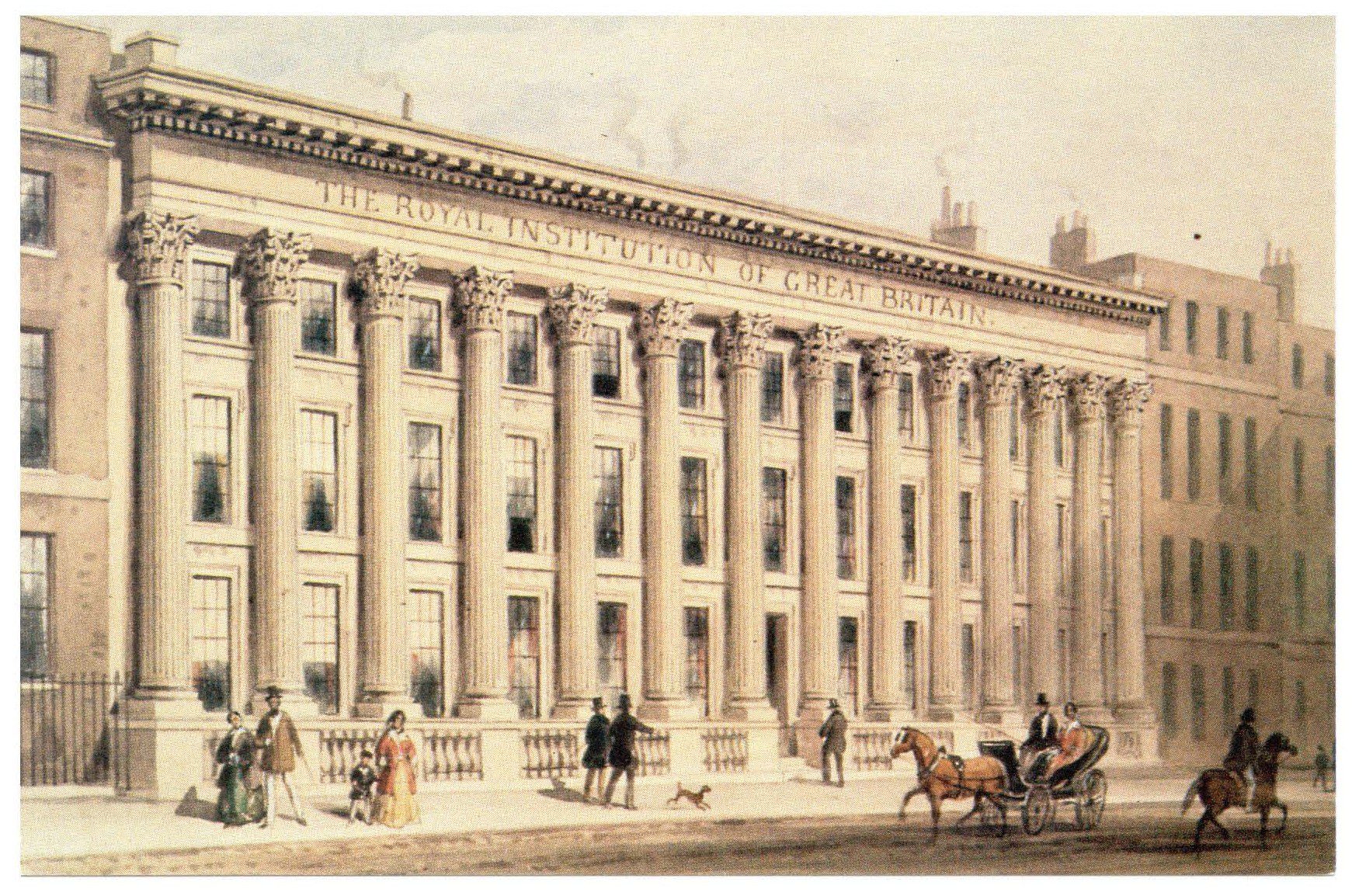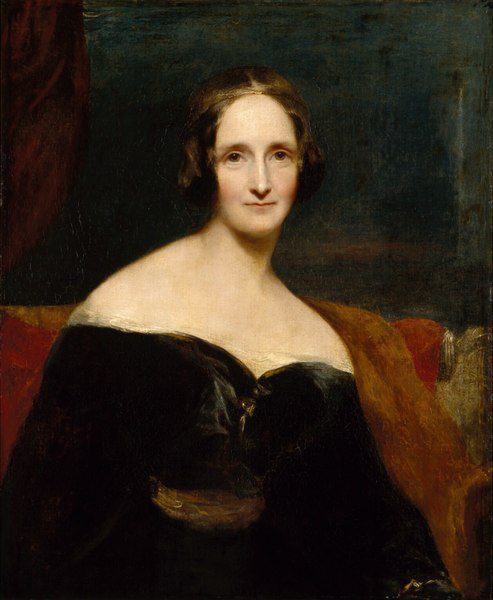![]() Sir Humphry Davy (1778-1829) is usually remembered as the inventor of a revolutionary miner’s safety lamp. But his wild popularity came as much from his influence on popular culture as it did from his contributions to chemistry and applied science.
Sir Humphry Davy (1778-1829) is usually remembered as the inventor of a revolutionary miner’s safety lamp. But his wild popularity came as much from his influence on popular culture as it did from his contributions to chemistry and applied science.
In the first few years of the 19th century, there was no hotter spectacle in London than Davy’s lectures at the Royal Institution. The carriage traffic jams caused by his keen audience led to the introduction of London’s first one-way street.
Hundreds of members of the public, many of them women, crowded into the lecture theatre to hear the charismatic Davy speak about his cutting edge research. They would watch demonstrations of his work, which often included elaborate explosions and other breathtaking displays.
In more recent times, Davy’s star has waned. Through our work on the Davy Notebooks Project, we aim to change that. Thanks to the help of thousands of volunteers, we’re creating the first digital edition of Davy’s 83 manuscript notebooks, an exciting and important collection that we’ll soon be able to share with readers all over the world.
The first lecture Davy gave at the Royal Institution was on the subject of galvanism (the electricity generated by chemical actions). The force was thought at the time to be capable of animating matter – or of bringing something dead to life.
Davy was born in Penzance, Cornwall and despite a lack of formal education, he rose quickly from obscurity to become an important force at the centre of Britain’s scientific community.
As a young chemist, he spent several years in Bristol, where he experimented with new gases, including nitrous oxide (laughing gas) which he frequently inhaled himself to test its effect.

Moving to London, Davy eventually became director of the Royal Institution’s programme of chemical research and, later, President of the Royal Society. In his scientific life, he isolated more chemical elements than anyone before or since.
Davy’s famous lectures on the animating power of electricity at the Royal Institution may have inspired a young Mary Shelley as she came up with the idea for Frankenstein (1818), a novel that questioned the boundaries of creation using emerging scientific ideas.
Shelley may have even modelled aspects of the charming but reckless Victor Frankenstein on Davy himself. In fact, many of the things that Davy said in his lectures were borrowed word-for-word to craft the fictional scientist’s dangerous experiments.

But, as Mary Shelley probably would have known, Davy was also a writer himself with close ties to the leading authors of his day.
He was friends with poets Lord Byron and Robert Southey and had a hand in the creation of some of the greatest works of the Romantic period. This included editing the second edition of William Wordsworth and Samuel Taylor Coleridge’s Lyrical Ballads (1800).
And he wrote his own poetry – lots of it. The pages of Davy’s dozens of surviving notebooks are crammed full of poems, both published and obscure, which share space with the complex records of his scientific experiments, alongside the notes for Davy’s jaw-dropping lectures.
Discovering Davy’s poetry
Our project aims to make these notebooks – which have never been transcribed in their entirety – available in a free to read, online edition based on crowd-sourced transcriptions provided by nearly 3,000 volunteers.
Their hard work has enabled us to bring Davy’s fascinating work in the arts and sciences to a whole new generation.
Davy’s notebooks give invaluable insights into how his mind worked. His firm conviction in the powers of the intellect, coupled with an unshakeable self belief, lay at the heart of his considerable success. As he declares in notebook 19E, containing drafts of lectures dating from around 1802:
Man is formed for pure enjoyments / his duties are high his destination / is lofty and he must then be / most accused of ignorance and folly / when he grovels in the dust having / wings which can carry him to the / skies.
These manuscript discoveries show how Davy influenced others, including Mary Shelley, through fantastical ideas rooted in scientific enquiry. While he may not be widely known today, his outsized achievements and towering public personality jump from their pages.
Whether influencing some of the greatest works of literature, or pioneering new modes of experimentation, Davy’s notebooks tell a fascinating story about the intertwined history of the arts and sciences in British history.
Understanding Davy’s legacy – and his possible influence as Victor Frankenstein’s role model – reminds us that these two arenas are much more closely, and importantly, linked to one another than we often hold them to be.![]()
Alexis Wolf, Research Associate on the Davy Notebooks Project, Lancaster University and Andrew Lacey, Senior Research Associate on the Davy Notebooks Project, Lancaster University
This article is republished from The Conversation under a Creative Commons license. Read the original article.
Source Link: Volunteers Are Transcribing The Notebooks Of Scientist Who Inspired Mary Shelley’s Frankenstein